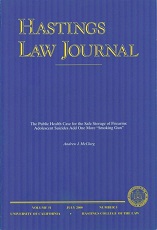Judith F Daar

Extract
Conclusion
The plight of Helga Wanglie . . . focused attention on the issue of physician autonomy in the context of patient decision making. That case challenged the court, as well as our society, to consider whether a physician has an obligation to provide medical treatment he or she believes is inappropriate. . .The concept of a physician’s professional conscience will become increasingly relevant as the cost of health care rises to the point where our demands for care greatly outweigh our ability to pay for such care . . . to downplay the role a physician’s professional conscience plays in medical decision making, as both courts and policy makers traditionally have done, does not advance patient autonomy; instead, it causes doctors to be more conservative and withholding in the range of options they offer their patients. If patient autonomy is to have meaning, recognition must also be given to a physician’s moral autonomy. This Article suggests that when patients clash with their physicians over treatment choices, the principle of patient autonomy does not automatically require that the physician be forced to comply.
Daar JF. A Clash at the Bedside: Patient Autonomy v. A Physician’s Professional Conscience. Hastings Law J. 1993 Aug;44(6):1241-1289.